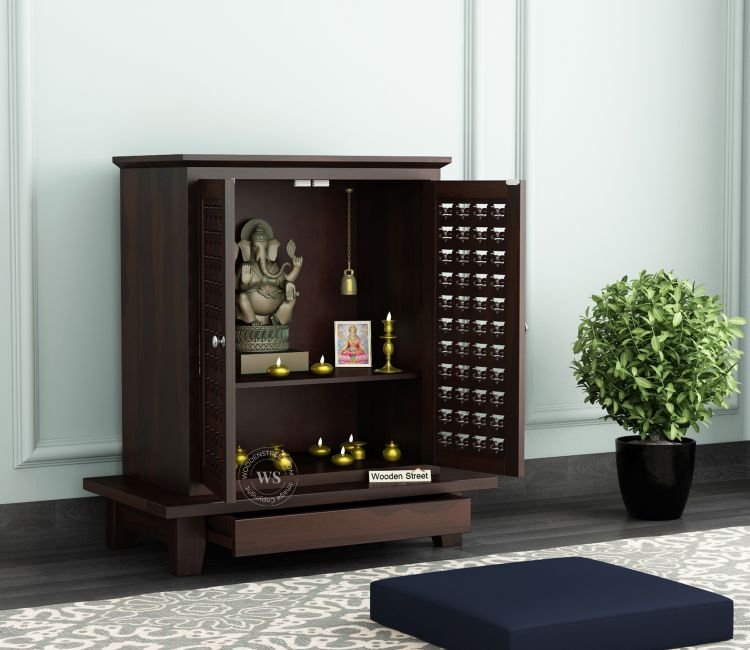Designing a spiritual space within your home requires a delicate balance between tradition and modern aesthetics. A home temple is not just a place of prayer; it is a space of peace, reflection, and positive energy. With evolving lifestyles and limited space, today’s homeowners are seeking ways to merge timeless religious elements with sleek contemporary styles. A well-planned home temple design can achieve this harmony, creating a sacred nook that feels both serene and stylish.
The Role of Tradition in Temple Design
In many cultures, especially Indian households, the presence of a home temple is considered essential. Traditional temple designs are often made from wood, feature intricate carvings, and follow Vastu principles. They typically include features like domes, pillars, and jharokhas which reflect spiritual symbolism. Many of these age-old design aspects are deeply rooted in religious beliefs and customs that have been followed for generations.
These traditional designs are not just about aesthetics but also about aligning the temple space with spiritual significance. The direction it faces, the placement of idols, and the inclusion of a bell or diya all have specific meanings. When designing a modern home temple, respecting these traditional values adds authenticity and depth to the design.
Incorporating Minimalism Without Losing Sanctity
Minimalism has become a popular design trend across homes, and the same applies to home temple design. Modern pooja spaces now embrace clean lines, soft lighting, and clutter-free arrangements. Instead of large and elaborate temple structures, homeowners are now opting for compact temple units that fit seamlessly into living rooms, hallways, or bedrooms.
This minimalist approach focuses on keeping only the essentials—idols, lamps, incense holders, and sacred books—without overcrowding the space. Using neutral tones like white, beige, or soft greys along with natural wood finishes can create a calming environment. Even with a minimalist look, the divinity of the space is maintained through thoughtful arrangement and subtle decor.
Creative Use of Space in Compact Homes
As urban homes shrink in size, finding space for a full-fledged temple can be a challenge. However, modern home temple design is all about adaptability. Wall-mounted temples, corner units, and foldable pooja spaces are now increasingly common in apartments and compact homes.
Smart design solutions include converting a niche in a wall into a temple or using multi-functional furniture that opens up into a pooja space. Glass panels or sliding doors can offer privacy while maintaining an open feel. Even a small alcove or hallway end can be transformed into a tranquil prayer corner with the right lighting and decor.
Blending Materials for a Modern Look
Traditional temples often use carved wood, brass, and stone, whereas modern designs make creative use of materials like glass, metal, and even acrylic. One of the most effective ways to balance tradition and modernity is by blending these materials thoughtfully.
For instance, a wooden temple structure with a backdrop of frosted glass or metallic accents can bring a fresh twist to a classic style. Marble, especially white marble, is also gaining popularity for its elegant and timeless appeal. Lighting plays a crucial role here—LED strip lights, spotlights, or diyas placed strategically can add a warm, divine glow to the space.
Design Styles That Reflect Personal Taste
Today’s homeowners are increasingly designing their prayer spaces to reflect their personal taste. Whether it’s a South Indian-style wooden mandapam or a Zen-inspired altar with natural elements, there are countless ways to make your home temple design unique.
Some people prefer to keep it simple with a floating shelf and one deity idol, while others may opt for a more ornate and detailed setup. The use of traditional elements like brass lamps or bells paired with modern wall art or muted color schemes creates a blend that feels rooted yet fresh.
Creating a Calming Ambience
More than just looks, the temple’s environment should support a peaceful state of mind. One of the key aspects of modern temple design is creating a sensory experience. Soft lighting, calming colors, and the use of natural elements like plants, pebbles, or water features contribute to a serene vibe.
Even the choice of incense, sound of bells, or playing of devotional music in the background can elevate the temple’s atmosphere. Whether the temple is large or small, these details help make it a special and sacred part of the home.
Conclusion
A well-designed home temple is where spirituality meets style. Today’s homeowners no longer have to choose between traditional aesthetics and modern functionality. With careful planning and thoughtful decor, it is possible to create a home temple that honours age-old customs while fitting effortlessly into contemporary living. By blending classic elements with clean lines, natural materials, and smart design, a home temple design can truly reflect both devotion and design sensibility in a meaningful way.
